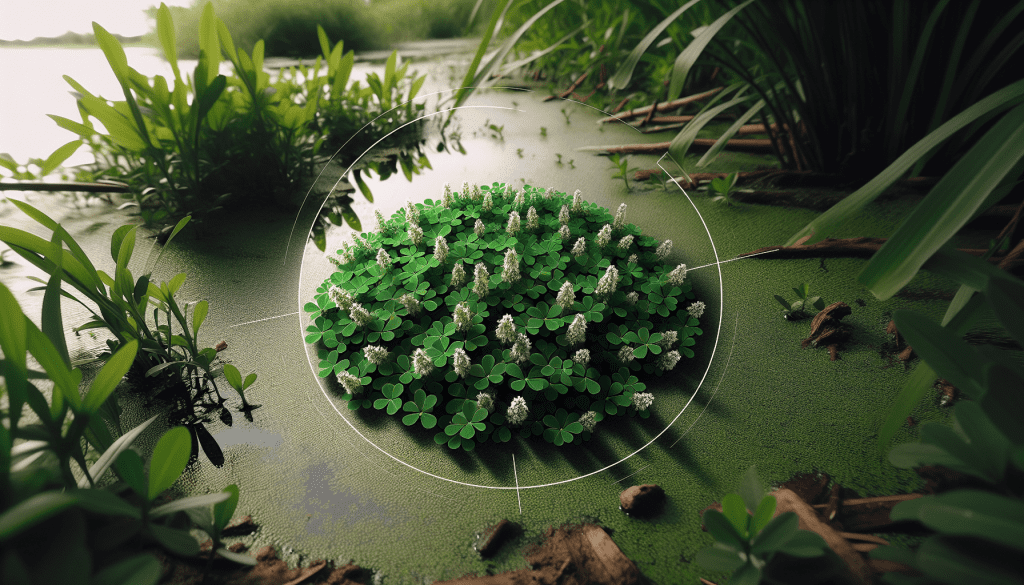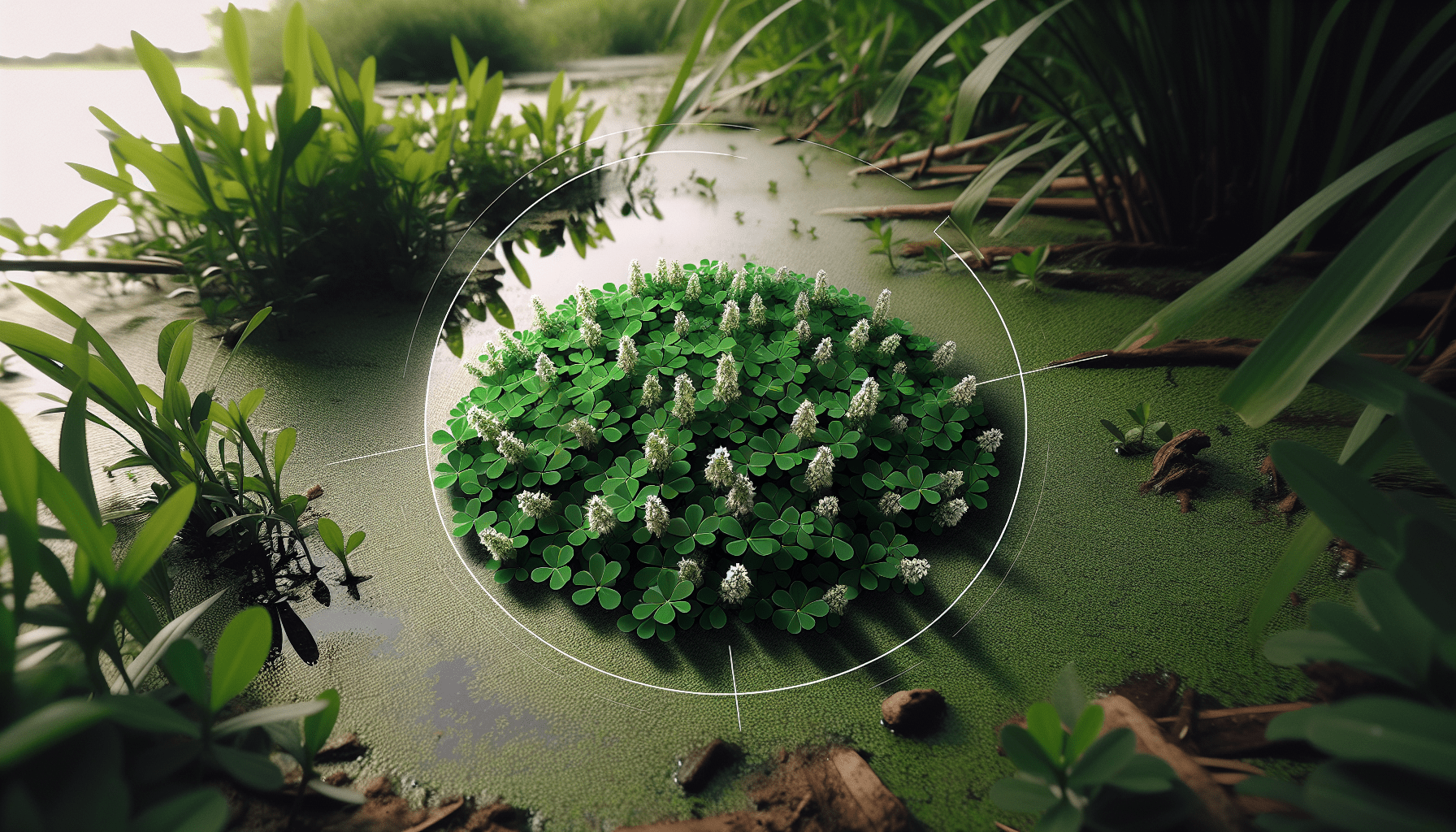Tackling stubborn alligator weed in your garden can be a daunting task, but with the right approach, you can effectively control this invasive species. In “How to Properly Apply Herbicides to Target Alligator Weed,” you’ll discover the essential steps and techniques to ensure you’re using herbicides efficiently and safely. Learn about the best times to apply these treatments, the various types of herbicides available, and practical tips for achieving the best results. Whether you’re a seasoned gardener or a beginner, this article will guide you through the process of managing alligator weed, helping you to maintain a healthy and thriving garden. Have you ever wondered how to effectively control the evasive alligator weed in your garden or waterway? If so, you’re not alone. Alligator weed (Alternanthera philoxeroides) is a notorious invader that can quickly take over various ecosystems, from wetlands to agricultural lands. In this guide, we’ll dive into the essentials of how to properly apply herbicides to target alligator weed effectively.

Understanding Alligator Weed
What is Alligator Weed?
Alligator weed is a perennial plant native to South America. It has elbowed its way into many parts of the world, including the United States, where it has become a significant nuisance. This invasive species forms dense mats that can choke waterways, disrupt native plant communities, and impair the function of irrigation and drainage systems.
Why is Alligator Weed a Problem?
Alligator weed is not just unsightly; it can have severe ecological and economic impacts:
- Environmental Impact: It outcompetes native plants, reducing biodiversity.
- Water Quality: Dense mats of alligator weed can deplete oxygen levels in water, affecting aquatic life.
- Agricultural Issues: It can invade crop fields and pastures, reducing agricultural productivity.
- Navigational Hazards: In waterways, it can obstruct boats and other forms of water transport.
Identifying Alligator Weed
Correct identification is crucial. Look for the following characteristics:
- Leaves: Oppositely arranged, lance-shaped, and smooth-edged.
- Stems: Hollow, sometimes bending at the joints.
- Flowers: Small, white, and clustered in a globular shape.
The Importance of Herbicides
Why Use Herbicides?
Herbicides can be highly effective in managing alligator weed when used correctly. They offer several advantages:
- Efficiency: Herbicides can cover large areas relatively quickly.
- Cost-Effective: Though there is an initial investment, herbicides can save time and labor costs in the long run.
- Targeted Control: Many herbicides specifically target invasive weeds like alligator weed without harming your beneficial plants.
Types of Herbicides
Herbicides are broadly classified into two categories:
- Selective Herbicides: Target specific plants while leaving others unharmed.
- Non-Selective Herbicides: Kill a wide range of plants.
| Type of Herbicide | Example | Use Case |
|---|---|---|
| Selective | 2,4-D | Lawns and crops |
| Non-Selective | Glyphosate | General vegetation control |
Continuous monitoring and application will be necessary to manage and eventually eradicate alligator weed.
Preparation Before Applying Herbicides
Safety First
Always follow the manufacturer’s guidelines for herbicide safety:
- Protective Clothing: Wear gloves, long sleeves, pants, and eye protection.
- Read the Label: Follow all instructions on the herbicide label.
- Personal Protective Equipment (PPE): Make sure you’re adequately protected to avoid any health issues.
Timing the Application
The timing of herbicide application is crucial for effectiveness. Generally, the best times to apply herbicides are:
- Early Morning: When dew is still present and the plants are most receptive.
- Late Afternoon: Avoiding the peak heat when herbicides can evaporate too quickly.
Environmental Considerations
Always consider the environmental impact:
- Avoid spraying on windy days to prevent drift.
- Do not apply herbicides before heavy rain, which can wash the chemicals away.
- Ensure you’re using herbicides that are safe for the surrounding flora and fauna.
Step-by-Step Guide to Applying Herbicides
Choosing the Right Herbicide
Selective Herbicides: If you’re dealing with an infestation in a specific area like a garden or crop field, consider using selective herbicides. Non-Selective Herbicides: If you need to clear large areas or waterways, non-selective herbicides may be more effective.
Mixing the Herbicide
Follow the manufacturer’s instructions for mixing the herbicide. Generally, you’ll need:
- A clean sprayer to avoid contamination.
- Fresh water for dilution.
Test Spraying
Before full-scale application, conduct a small test spray to ensure:
- The herbicide is mixed correctly.
- The sprayer is functioning properly.
- There are no adverse effects on non-target plants.
Main Application
Here are the steps for effective herbicide application:
- Preparation: Wear your PPE and prepare your herbicide mix.
- Spraying: Hold the sprayer at a comfortable angle and apply evenly.
- Coverage: Make sure you cover all the alligator weed but avoid drenching the area.
- Follow-Up: Monitor the area over the next few weeks for signs of eradication or regrowth.
Post-Application Care
After applying herbicides, take these steps for the best results:
- Monitoring: Keep an eye on the treated area.
- Repeat Applications: Sometimes a second or third application is necessary.
- Cleaning Up: Clean your equipment thoroughly to avoid contamination.

Integrated Weed Management
Herbicides can be a part of a broader Integrated Weed Management (IWM) strategy:
Mechanical Controls
Mechanical methods such as cutting, mowing, or pulling can complement herbicide use. Mechanical methods are most effective when combined with herbicide treatments, especially in smaller infestations.
Biological Controls
Biological control agents, such as certain types of insects, can naturally manage alligator weed populations. However, these methods are usually more long-term and less immediately effective than herbicides.
Cultural Controls
Cultural methods include promoting healthy plant communities that compete with alligator weed. This might involve:
- Seeding native or beneficial plants.
- Maintaining proper irrigation and drainage systems.
Use of Deterrents
Some deterrents, such as physical barriers, can prevent the spread of alligator weed in specific locations such as gardens or small ponds.
Avoiding Common Mistakes
Over-Application
Applying too much herbicide can harm the environment and potentially damage non-target plants. Always follow the label’s instructions.
Inconsistent Monitoring
After applying herbicides, consistent monitoring is critical. Neglecting this can result in a resurgence of alligator weed.
Ignoring Weather Conditions
Weather can significantly impact herbicide efficacy. Always check the local forecast before application to avoid wastage and ensure maximum effectiveness.
Long-Term Management
Effective long-term management involves continuous monitoring and a combination of control strategies. It’s essential to incorporate mechanical, biological, and cultural controls alongside herbicide applications.
Setting Up a Schedule
Create a treatment and monitoring schedule. Regular inspections and treatments will help to keep alligator weed under control.
| Month | Activity |
|---|---|
| January | Inspection and Mechanical Removal |
| March | First Herbicide Application |
| June | Monitor and Reapply if Necessary |
| September | Second Herbicide Application |
| December | Year-End Review and Planning |
Reporting and Record Keeping
Keeping records of your management efforts can help you identify what works and what doesn’t, allowing you to fine-tune your approach over time.
Conclusion
Controlling alligator weed is challenging but entirely feasible with the right approach. By understanding the problem, choosing the right herbicides, following proper application techniques, and integrating various control methods, you can successfully manage and eventually eradicate this invasive plant. So, why not take the first step today? Equip yourself with the knowledge and tools needed to reclaim your garden or waterway from this persistent invader. Happy gardening!
